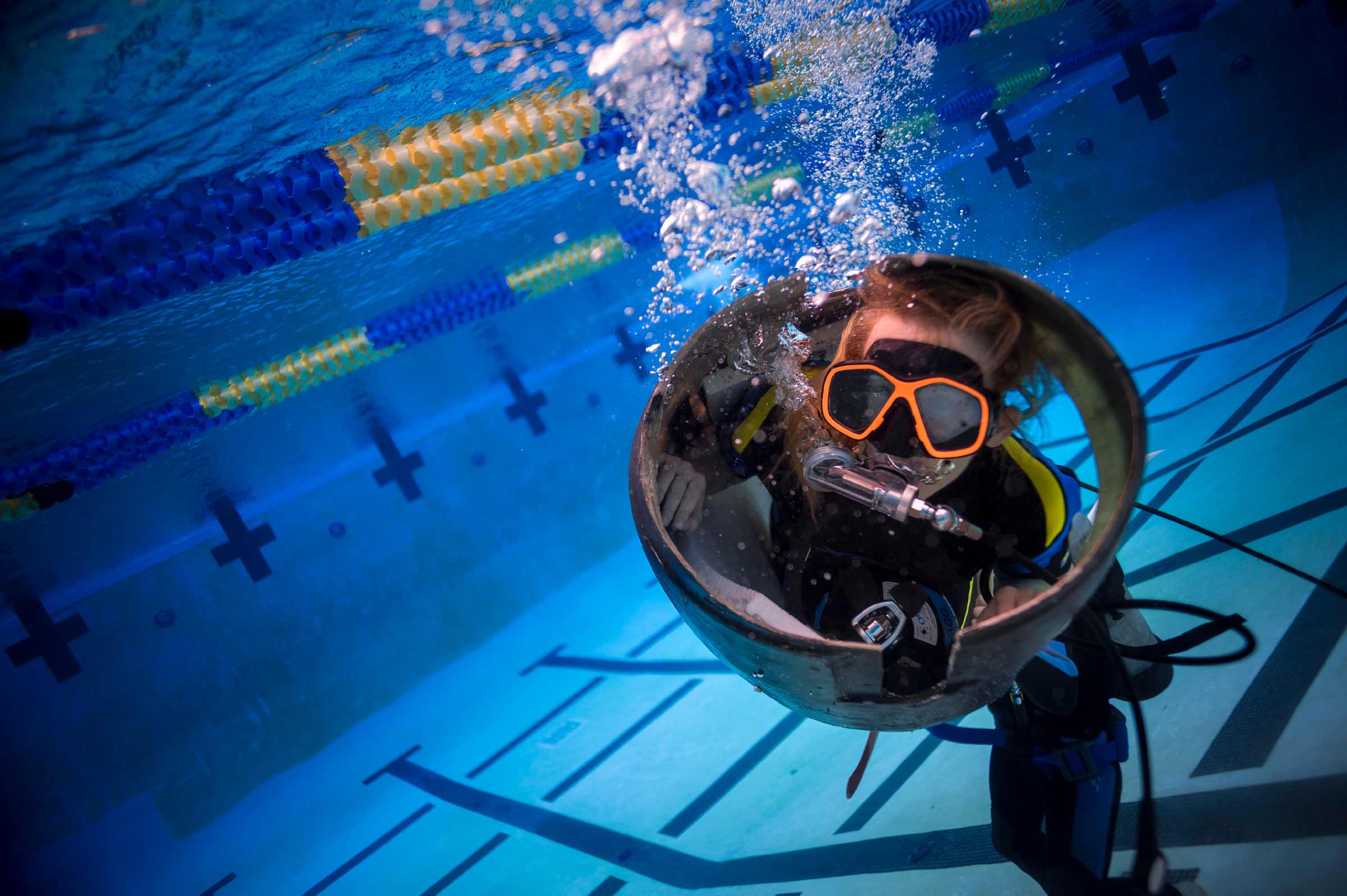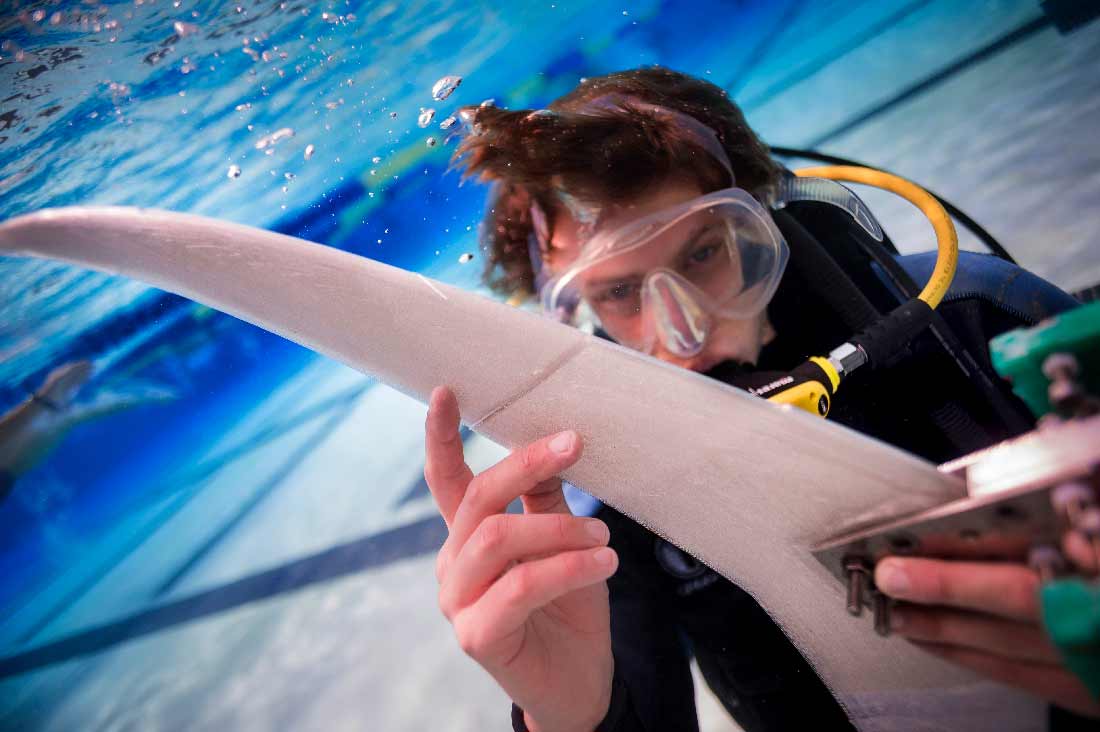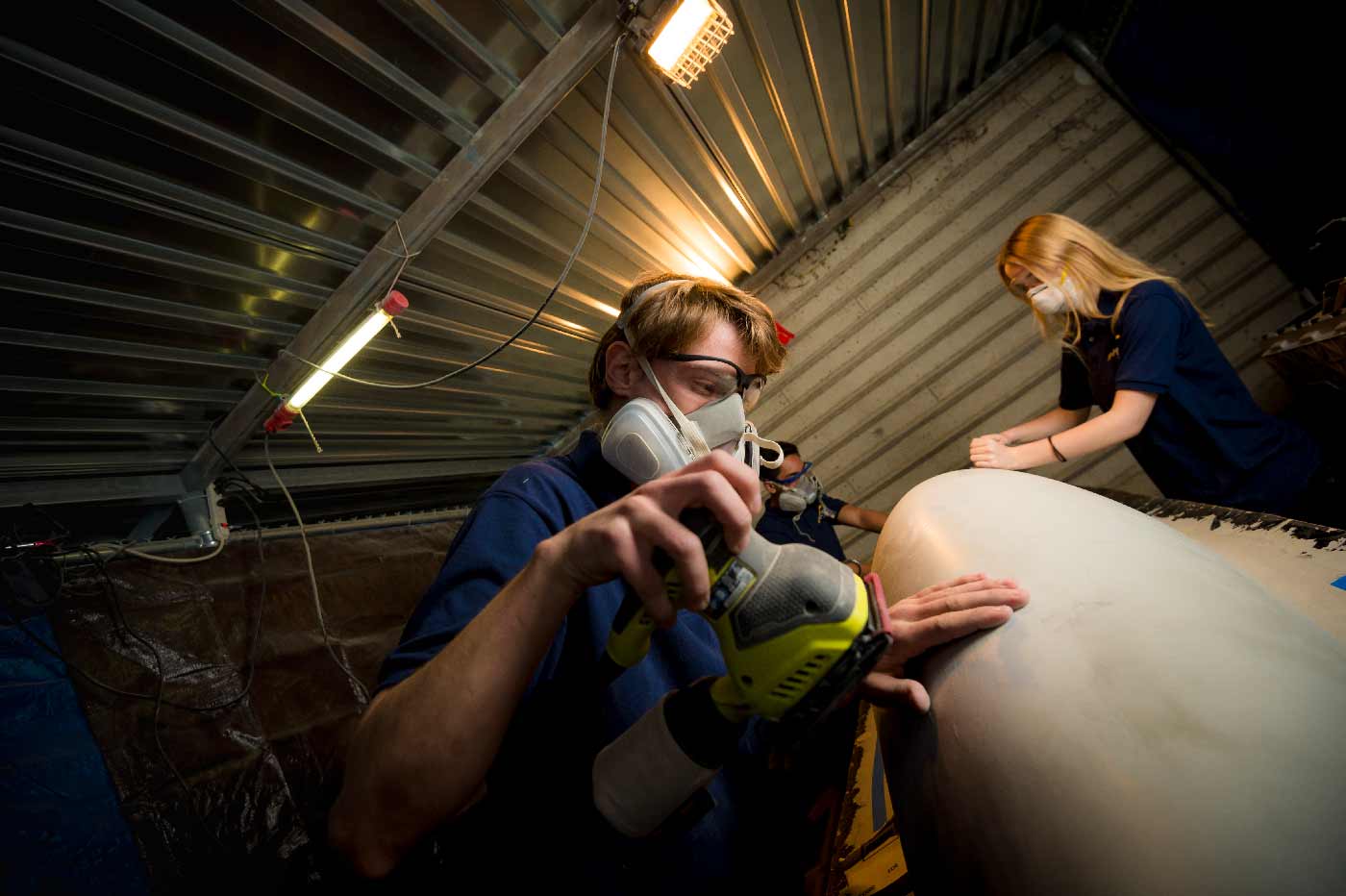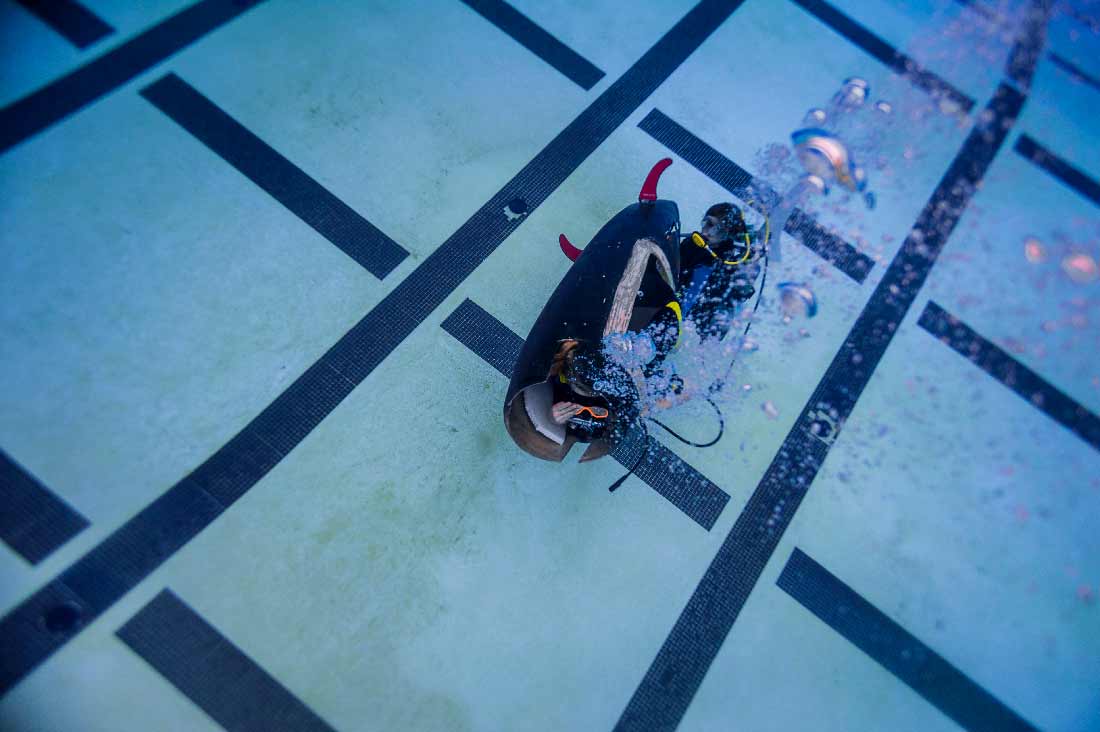
By:
- Deborah L. Jude
Published Date
By:
- Deborah L. Jude
Share This:
Engineering Students Hope Design Based on Tuna Tail Fin Will Power Them to Win Submarine Race

Engineering students outfitted with scuba gear test a human-powered submarine cabin that fills with water when submerged. Photos by Erik Jepsen/UC San Diego Publications
With a propulsion system inspired by the tail fins of tuna, UC San Diego engineering students aim to win an annual human-powered submarine race this summer. The race pits student teams from around the world against each other—with each team aiming to be the first to get their submarine cross an underwater finish line.
The International Submarine Races provide an opportunity for teams of students around the nation to develop and race one- or two-person submarines that rely on a wide variety of techniques for propulsion, steering and guidance. The submarine cabins fill with water when submerged, and crew members are outfitted with scuba masks and tanks in order to breathe. They use a combination of pedaling something akin to a bike pedal and propulsion to move the submarine from one end of the basin to the other.

The team is incorporating a 3D-printed, oscillating tail fin, modeled after the tuna fish.
Engineering students from the UC San Diego chapter of the American Society for Mechanical Engineers have been competing in the submarine races since 1997. They set a world record in 2000 for fastest speed.
This year’s competition marks the first time the students will incorporate bio-inspired, 3D-printed design into their submarine.
“The Human-Powered Submarine team at UC San Diego has grown to 26 people, and this year, we’re doing something really unique,” said Team Captain Alistair Twombly, a fifth-year aerospace engineering major. “We’re using a 3D-printed, oscillating tail fin, modeled after the tuna fish. Most fish swim by wagging or flapping their tail fin. Tuna have a crescent-shaped tail fin, which allows them to generate maximum forward movement when flapped—making these fish some of the fastest in the sea.”
Making the fin was not 3D printing as usual. First, the students had to customize a 3D printer in order to be able to print the tuna-inspired fin for their submarine.
“We needed to modify a printer to handle high temperatures and dual extrusion so that we could experiment with a variety of combinations of rigid and flexible materials, as well as have a frame size large enough to print the fin,” said Thomas Spencer, a second-year aerospace engineering major and the Propulsion Lead for the team.
According to Twombly, using a biomimicry approach inspired the team to experiment with fin sizes, shapes, materials and movements.

The hull of the submarine
Electronics Onboard
Tapping into tuna is not the only first for the team. This is also the first year the students are putting electronics onboard, and they’re getting real-world engineering experience doing it.
“We’re incorporating automated steering by taking in sensor data to control the side fins. That frees up the pilot to put all their energy into pedaling,” said Louise Xu, a second-year electrical engineering major. She is the Electronics Lead for the team.

The students test the submarine in one of the pools on UC San Diego's campus.
“In our classes we rarely, if ever, need to consider the user-friendliness of our design and the environment in which our circuits operate. Adding electronics to a submarine really helps to bring an aspect of real world engineering home since we need to consider the limitations of both our electronic components and our human pilot in an underwater environment."
The Jacobs School of Engineering team is optimistic about this year’s competition, which takes place June 25-30. The hull itself is modeled after the school’s 2009 hull, which came in second place, just behind the submarine that set the world record. If they do well at the competition, held each year in Maryland, the students plan to compete in England next year.
The Human-Powered Submarine team is sponsored by Sunrez, and the team is always on the lookout for additional industry and personal sponsors. Visit their website for more information.
Share This:
You May Also Like
Stay in the Know
Keep up with all the latest from UC San Diego. Subscribe to the newsletter today.


